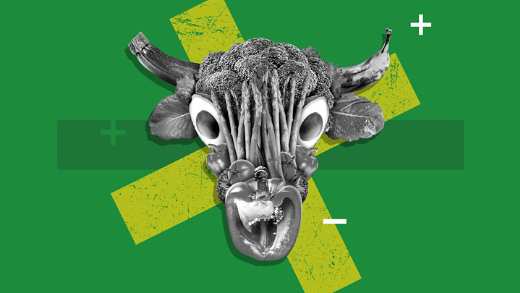Discover how a small Swedish football team used brave, unconventional methods to triumph over their competition. Östersunds FK was languishing near the bottom of the Swedish league system – until the launch of an unorthodox “culture academy” inspired the team to extraordinary success. What can we learn from this remarkable story?
In a small town nestled in the Swedish mountains, an audience gathers to watch a strange spectacle. A group of footballers moves in formation under the lights – but on a stage, not a football pitch. The roar of the fans has been replaced by the lilting strains of Tchaikovsky, and the players have swapped their boots for ballet pumps.
Meet Östersunds FK, a football team with a difference. In 2015 the players and coaches performed a version of Swan Lake for the local community, as part of a programme of cultural activities designed to nudge them out of their comfort zone and improve their collaborative skills. As well as dancing, Östersunds rapped, herded reindeer and even co-authored a book.
We wanted to play a better kind of football and encourage the players to look at themselves – and wider society – in a different way.
“We wanted to play a better kind of football and encourage the players to look at themselves – and wider society – in a different way,” says Karin Wahlén, director of the Östersunds Culture Academy.
The idea was that by integrating their footballing expertise with methods and ideas from outside the sport, the players would grow as individuals and develop into a more effective team. The results speak for themselves. In the year of the ballet performance, Östersunds earned promotion to Sweden’s top division for the first time; in 2017, it won the Swedish Cup and a place in the Europa League, rubbing shoulders with giants of world football.
Like many smaller clubs, Östersunds has recently been stricken by financial problems that threaten its long-term future. But the Culture Academy has bred camaraderie and resilience, and the players continue to battle on against the odds. Their inspiring story contains wider lessons about the principles of good teamwork and how the right working environment can drive success.

Bringing it all together
Hemmed in by dense pine forests and overlooked by icy peaks, Östersund (population: 50,000) is not natural footballing territory.
Enter an unheralded English coach named Graham Potter, who took over as manager of the local team in 2011. Potter quickly recognised the Culture Academy could give the club an edge over better-financed rivals.
Potter picked up on an arcane Swedish word – Eljest, meaning “to be different” – which became Östersunds’ unofficial motto. He decided to do things differently from other football clubs – to connect ideas and approaches from wider culture and to create an inclusive atmosphere in the dressing room. He wanted players with the courage to try new things and express themselves creatively on and off the pitch.
As director of the Culture Academy, Wahlén curated a range of activities for the players. They spent time with the local Sami culture, an indigenous community; performed their own self-penned raps at a hip-hop concert; and founded a book club, which led to the publication of a collaborative autobiography.
The players responded enthusiastically. They learned new skills and began to contribute their own ideas about how to tackle each project. Communication improved as they learned more about each other. They started to trust and rely on their colleagues as they pursued their objectives.
By the summer of 2015, Östersunds was on the brink of promotion to the Allsvenskan, Sweden’s equivalent of the Premier League. As they entered the final stages of the season, a special cultural activity was needed to bring the players together as a group and harness their collective strengths. Searching for an appropriately daunting challenge, Wahlén hit on just the thing: ballet.

Collaborating across disciplines
“I was quite reluctant at first,” says choreographer Maria Nilsson Waller, but in a chance meeting with the squad on a flight back to Ireland, she was struck by the togetherness of the players and their unexpected passion for art and culture.
Waller decided to throw Östersunds in at the deep end with the most famous ballet of all: Tchaikovsky’s Swan Lake. With little over a month to rehearse, she opted for a fresh approach. She involved the team in the design of the choreography and prompted them to respond to the music in their own ways.
Football and ballet began to cross-connect. Waller noticed the team’s athletic training influenced their movements in the studio; out on the pitch, the discipline required to train for the dance fed into their tactical work.
The sense of victory afterwards was like nothing I've ever seen in dance; I have never experienced such a sense of shared joy.
As rehearsals progressed, Waller brought in theatre director and filmmaker José Miguel Jiménez to interview the players about their backgrounds. Footage from these conversations formed the centrepiece of Jiménez’s award-winning documentary on the project, See the Man.
“When Maria told me what she was doing my first reaction was surprise. My preconception was that you couldn’t do this kind of thing with footballers,” says Jiménez.
On the big night, the players were visibly nervous as they stepped out on stage. But their performance was outstanding: they executed the complex choreography down to the last pirouette. The applause that erupted when the curtains closed matched the celebrations that greeted Östersunds’ promotion that season.
“The sense of victory afterwards was like nothing I’ve ever seen in dance; I have never experienced such a sense of shared joy,” says Waller.

Diverse perspectives
Östersunds has applied its open, collaborative approach to its engagement with wider society. The club formed partnerships with the Darfur United, a team of resettled refugees from Sudan, and the players regularly visited local refugee centres to kick a ball around with the children who lived there.
In his conversations with the team, Jiménez learned the players were deeply aware of the political environment in Europe at the time and keen to challenge anti-immigration sentiments with a positive message.
For them, being part of this team wasn't just about football; it was about a whole set of values.
“The players were conscious of the different nationalities and backgrounds represented in the club and the fanbase, as well as the wider situation in Europe around immigration,” he says. “For them, being part of this team wasn’t just about playing football; it was about a whole set of values.”
As Wahlén points out, diversity is not just an important goal for its own sake; it is also a key driver of performance. Studies show diverse teams outperform homogeneous ones in a range of fields. Bringing different perspectives to bear can help organisations solve problems and overcome challenges, in the boardroom as well as on the football pitch. It’s all about building a bigger “knowledge bank” that encompasses different viewpoints, Wahlén says.
In Wahlén’s view, the approach that sparked the club’s remarkable rise through the divisions – building an inclusive culture based on collaborating across disciplines and connecting diverse perspectives – can be applied beyond football in business, education and everyday life. She hopes more teams will take Östersunds’ lead in dancing to a different tune.



















